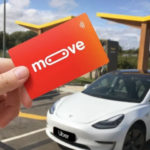If you are looking for passive income opportunities with high return on investment potential, you may want to investigate the increasing number of masternodes available in the crypto space. As with all cryptocurrency investments, the returns are potentially huge, but so too is the risk. So be warned, this article is for guidance only and masternodes are purchased at your own risk.
What are Masternodes?
There are a number of different methods for verifying cryptocurrency transactions and for multiplying the available stock of the currency itself. For Bitcoin, the best-known cryptocurrency, verification is achieved through mining, which requires heavy-duty computational power beyond the reach of most of us. Miners run their systems day and night, often in pools with other miners, verifying transactions and adding blocks to the great ledger of the Bitcoin blockchain. For this, they are rewarded in fees. Mining is a Proof of Work method of verifying transactions and is competitive by nature. Why? Because the miner who verifies the transaction first will receive the fee. Because of this, huge expanses of energy are being used validating Bitcoin transactions.
The alternative is Proof of Stake, which is less energy dependent. With a PoS system, anyone running a node that is connected to the blockchain is rewarded in relation to how much he or she owns. In other words, if you have a small number of a PoS crypto and you leave your wallet connected to the network day and night, you will pick up some small rewards for doing so.
A Masternode is more than this, but requires significantly greater investment. Masternode holders offer a service to the cryptocurrency community by providing instant transactions, greater anonymity in the network and they get to vote on proposals to move the service further along. But actually, they don’t have to really do anything except buy enough coin to qualify for a masternode and then set it up to run day and night.
Sounds too complicated! You said this was passive income.
Well, you don’t really have to understand the technicalities to get involved. There are a host of cryptocurrencies running masternodes and the best place to start is to investigate how much coin you need to get up and running and what return on investment you might expect.
The best-known cryptocurrency that uses masternodes is Dash, but this ship has well and truly sailed for most mortals. You need 1000 Dash coins, which was achievable a couple of years ago, but would cost in the region of $300,000 (end of May 2018) now and offers an ROI of 6.99%. Then there is PIVX (requires 10,000 coins, at the cost of $36,000) which offers a return on investment of 5.52%. There are hundreds more, some of which can be bought for as little as $3 or $4, so you don’t have to be rich to get started.
As with anything crypto-related, returns are actually impossible to predict because they are based on the underlying value of the currency itself. The ideal scenario is a new coin with a low value, an attainable number of coins required for a masternode and one that will increase in value. It’s all very well receiving more coins as rewards for your investment but if the value of the coins is dipping every day you will be losing money all the while.
However, it is worth remembering that you will still maintain your original stake. So if you purchase 10,000 PIVX, they are still yours to sell at any point.
Pooling resources
If you are adventurous, then choosing a new coin and hoping for success is the best option as the rewards while the coin value increases can be astronomical. But with many new coins coming along offering masternodes there is the fear that with new coins being created all the time through Proof of stake, it is inevitable that the coin will lose value after an initial surge. There are those who have made a large return from getting in early and getting out after a few months when the prices start to dip again.
If you would rather purchase a masternode in an established currency like Dash or PIVX but don’t have the resources to do so, you may consider one of the many services available now for sharing a masternode. These, as always, are not without risk as you will not hold the private keys to your currency yourself and you will have to do some homework to avoid scams. But on the plus side, this allows you to sit back and let someone else do all the work and you won’t have to worry about setting up software or running the masternode yourself.
You can examine our list of Masternodes here, and check up to date costs/ROIs here.
Good luck!












